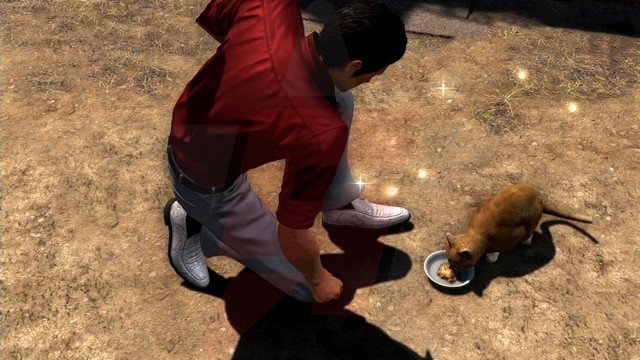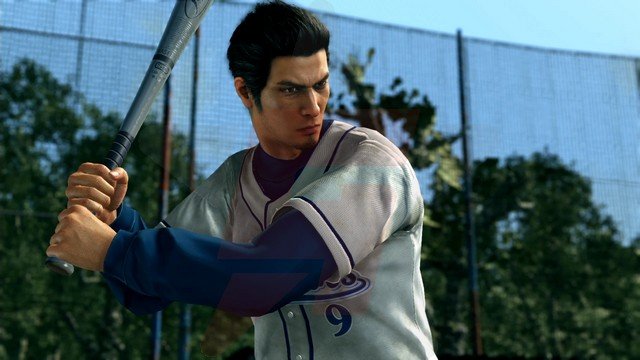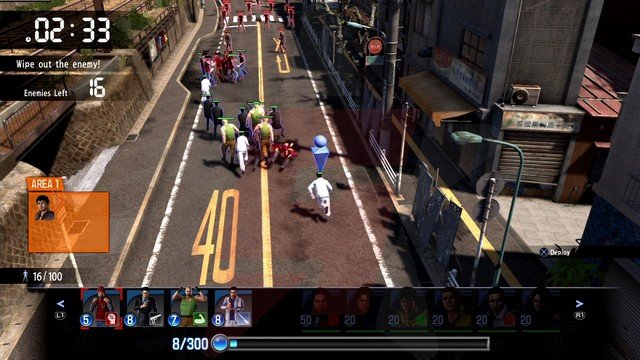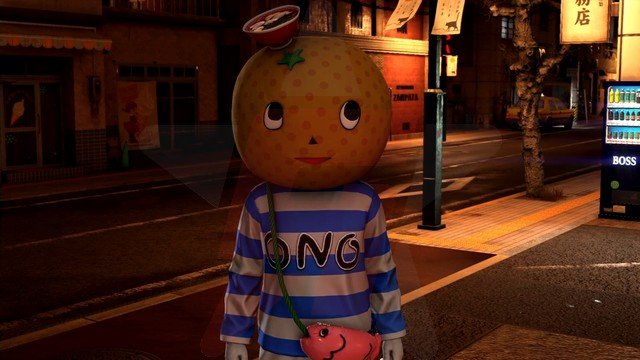The Yakuza series has excelled in presenting poignant stories balanced by over-the-top action and humor since the first entry released in 2005. However, it wasn’t until the release of last year’s Yakuza 0 that the series gained real prominence in the West. I was one of the fans who discovered the series with that game, and though it’s only been a year since I first played it, I would rank the Yakuza series up with my favorite games of all time.
Yakuza 6: The Song of Life is a game that can’t be something for everyone. On the one hand, the series has done well in its native Japan, and longtime fans of all nations expect Yakuza 6 to provide a satisfying conclusion to a story they’ve followed more than a decade. On the other hand, there are fans like me who just got into the franchise. I went into this game with a vague disappointment. After all, it’s a bit depressing to know that only a year after first meeting him in Yakuza 0, Kazama Kiryu would be starring in his last adventure and the conclusion to the seven-game arc.
For those who have spent a long time with the series, nothing can be spectacular enough of a send-off. For others, the time spent with Kiryu won’t be enough to soften the blow of knowing one of their favorite new characters will no longer be at the forefront of the Yakuza series. However, Yakuza 6 does an admirable job of meeting the demands of all fans, even if the result leaves a bit to be desired.
I’ll be trying to avoid spoilers for the other games in the Yakuza series as much as possible, but beware that there will be some below.
Yakuza 6 Review: The More Things Change….

The beginning of Yakuza 6 serves as a small recap of the events you absolutely need to know to understand the plot of this game. It covers the very tail end of Yakuza 5 and the consequences of Kiryu’s actions at the end of that game. The most important bits are that Haruka quit her career as an idol because she didn’t want to hide her relationship with Kiryu, and Kiryu ends up partially taking the fall for the events of Yakuza 5.
Kiryu chooses to face up and go to jail for three years with the thought that after that he can re-enter society with his debt paid and return to the Sunshine Orphanage to live with Haruka and the orphans. Due to her rather shocking retirement from the stage after declaring she was a family member of Kazuma Kiryu, the paparazzi begin smearing her and following her even to the orphanage. Unbeknownst to Kiryu, she leaves Sunshine Orphanage quite sometime before his sentence is up.
When Kiryu’s three years are up, he returns to Sunshine Orphanage to find that Haruka has been gone for years and that she hasn’t even called to check on the other orphans in months. With little information to go on, Kiryu decides to return to Kamurocho to try and find her trail.
The story of Yakuza 6 takes us through a changed Kamurocho. While still filled with neon and the bustle of Tokyo life, the Tojo Clan no longer reigns absolute. Kiryu’s former clan now faces threats from the Chinese Triad, growing street gangs, and other parties lurk in the shadow, their identities hidden. Eventually, Kiryu must also travel to Onomichi, Hiroshima, a quiet fishing town that is almost the exact opposite from Kamurocho in aesthetic but has dangers all too familiar to Kiryu.
For being the seventh game in the main Yakuza series, Yakuza 6: The Song of Life is quite approachable. It does a great job of reminding you just how the returning characters and Kiryu fit into the story without becoming too self-referential. You could start the series with Yakuza 6 and quickly find your footing in the plot.
However, Yakuza 6 very much forms an odd kind of trilogy with Yakuza 0 and Yakuza Kiwami. If you haven’t played at least those two games, you’ll still have a good time with Yakuza 6, but I don’t think you’ll get the same kind of satisfaction you would get if you had. As for playing Yakuza 2-5, those games are of course, excellent, but, they’re not as heavily referenced, and you could do without the knowledge of the events in those games (though you should go back and play them when you get the chance).
Yakuza 6 Review: …The More They Stay the Same

Your return to Kamurocho (and the later trip to Onomichi) will be very familiar in a number of ways. Many of the same systems you’ve grown to love in past games make a return. There are Sega arcades, this time with both classics like Outrun and Space Harrier, and newer games like Virtua Fighter 5 and Puyo Puyo being fully playable. Darts, hostess clubs, karaoke, and more are back as well.
The primary complaint (of those who complain) fans will have with Yakuza 6 is that it’s been scaled back in comparison with Yakuza 0 and Kiwami. Kamurocho is notably smaller, with places like the Champion District and Purgatory being sealed off during the game. Onomichi also feels quite empty in comparison to Sotenbori in Yakuza 0, but that’s by design since it’s a small town.
Yakuza 6 also has a much smaller amount of substories than previous games, totaling 52 (51+1 for completing them all). However, this is made up for somewhat by the fact that there are usually longer than the average quest in previous games, and there are few fetch quest substories. Additionally, each substory is fully-voiced, something that was lacking in previous Yakuza games.
Some series staples are missing entirely in Yakuza 6. UFO Catchers, Bowling, Pool, Shogi, and casinos are gone. This does somewhat make it feel like there’s less to do in the game, but there are a few new, more complex minigames that make up for it.
This game takes baseball a bit further than the traditional Batting Cage (though it still has those) minigame with the ability to manage your own baseball team. A major series of substories takes you through the drama and glory of being the captain of a minor league baseball team, and it’s one of the more fulfilling side quests of the series. There is also one significant new minigame that eclipses the others.
Yakuza 6 Review: The Kiryu Clan

Another, highly-touted, activity in Yakuza 6 is the clan creator. At a point in the story, Kiryu becomes involved in combating a giant gang that’s taken root in Kamurocho. To do so, he forms his own gang called the Kiryu Clan and begins training and recruiting members.
This mode lets you build up a clan, starting with a few lieutenants and soldiers and eventually stretching to have multiple captains, lieutenants, and advisers. The story that accompanies the Clan Creator is mostly divorced from the main plot of Yakuza 6, but it’s one you won’t want to miss while playing.
Kiryu is the leader of the clan and commands from the rear, so fighting with your clan isn’t the typical Yakuza affair. Instead, you have to send out units to automatically fight enemy gang members. There are two types of units you can command. The foot soldiers are made up of five different kinds of fighters, each with their own strengths and weaknesses.
You have some regular members that are just generic fighters, some that are equipped with guns, but weak to physical attacks, some hulking brutes who are slow, and even soldiers that throw grenades. The real power comes from your hero units though. These are named units that you have to recruit during the course of the story (or acquire from special Clan Codes) that are much stronger than the run of the mill units. You can command these heroes to go where you want, and most have a unique skill that can do things like heal all your units or unleash a devastating area attack.
The Clan Creator also allows for asynchronous multiplayer. You can upload your clan for others to fight, or attempt to take down other players’ clans. The experience you gain in multiplayer carries over to your single-player clan outings, so it makes the whole thing feel worthwhile and is a great way to build your clan’s experience.
There are some special characters to recruit for your clan that makes the whole thing a lot more fun and ridiculous. Having goofy Goro Majima as one of my top clan officers made the entire experience hilarious, and he is also very powerful. I spent a ton of time in my review playthrough training my clan and arranging my hierarchy to be just right, and this new mode was complex enough to be its own game.
Yakuza 6 Review: Catching Up to This Gen

Yakuza 6 is the first game to use the Dragon Engine, which was designed around the capabilities of current-gen consoles exclusively. Yakuza 0 and Yakuza Kiwami were terrific games, but they were held back by the fact that they were created with the PS3 in mind. The chief complaints I saw about those games were low-res visuals and stiff animations, and the Yakuza Team must have taken that to heart.
The visuals of this game are completely improved from previous Yakuza games. Kiryu and Kamurocho have never looked better, and the stiffness in animations is almost entirely gone. Everything flows so much better it makes me wish that they’d go back and remake the whole series in the Dragon Engine.
While Kamurocho has been technically cut down by the exclusion of some areas we’ve seen in previous games, the Dragon Engine allows for Kiryu to enter interiors with no loading screen, and there are a lot more buildings accessible than ever before. The same fluidity in gameplay extends to battles, with no lengthy loading screens in the way to dull the anticipation of ass-kicking. However, combat has suffered in one way.
Yakuza 6 Review: The Heat has Cooled
Unfortunately, the combat system isn’t as robust and varied in Yakuza 6 as it was in Yakuza 0 and Yakuza Kiwami. Kiryu only has one fighting style now. The upgrade system has improved, with skill unlocks being based on a five kinds of experience (muscle, agility, technique, charm, and spirit) instead of money unlocks or a grid. I liked that the more you did an activity associated with one of those five types of experience, the more you got, and unlocking Kiryu’s abilities is probably the least frustrating it’s ever been.
Combat itself is more fluid, and it feels like it’s slightly more skill-based than before. Button timing and deliberately pulling off combos is a lot more essential, though Kiryu moves a little slower (comparable to his Brawler-style in Yakuza 0 and Kiwami) the animation and hitboxes are a lot more precise than before.
My biggest complaint with combat, besides the narrowing of fighting styles, is the lowered emphasis on Heat actions and weapons this time around. Kiryu has gained an Extreme Heat Mode that you can activate upon filling some blue orbs at the top of the screen which increases his damage and defense along with granting access to new moves.
However, the amount of Heat moves available has drastically decreased, and it’s a decision that’s felt throughout the game. For example, if you knock an enemy down, you can no longer execute a Heat move that stomps their head or swings them around for more damage. At first, I thought this might be due to wanting to portray less violence, but from what I’ve seen Kiwami 2 brings all the Heat moves from the original game. It may have come down to the fact the engine was new and/or the team lacked time to implement as many as they would have liked.
Yakuza 6 Review: A Fitting Farewell to The Dragon of Dojima
Yakuza 6 gives a fitting end to Kiryu’s arc, and although some things are scaled back in comparison to previous games, the improvements that come with the new engine are worth it. It’s strange to think, but Yakuza has only recently begun to be seen as a AAA production in the West in the last year or so. However, even though Yakuza 6 doesn’t quite live up to Yakuza 0′s storyline and extreme gameplay variety, it absolutely stomps a mudhole in the majority of AAA games I’ve played in the last year from both Eastern and Western developers.
It was difficult not to prematurely judge Yakuza 6, after all, Yakuza 0 appeared on plenty of GOTY 2017 lists. However, once I stopped pitting it against the rest of the series and gave it a chance to breathe, I realized that even though it’s a streamlined experience, it was just as enjoyable as the rest of the series.
The Yakuza franchise is a unique, humorous, heartfelt series of games that just are almost impossible to score. It’s a franchise that was born and thrived in a time when quirky, out-of-the-box games were largely non-existent in the West, and fortunately for us, Sega has paid attention to the demand for more variety in games with an excellent translation and localization of Yakuza 6.
I could go on and on about how utterly incredible Kazama Kiryu is as a character, and how the Yakuza series has broadened my horizons when it comes to Japanese games. If you’ve played Yakuza in the past, I think you’ll get a tremendous amount of enjoyment out of this game. If you haven’t, do yourself a favor and grab Yakuza 0 and Yakuza Kiwami and play through both of them, then grab Yakuza 6 when it comes out on April 17.
-
Excellent story that provides a satisfactory conclusion to Kiryu's arc.
-
Graphics and animations are dramatically improved compared to previous Yakuza games.
-
New baseball and clan creator minigames are some of the most complex and fun of the series.
-
You have to befriend cats throughout the game so they can be adopted by a cat cafe and it is wonderful.
-
Doesn't require intimate knowledge of the whole series to play and enjoy.
-
Number of minigames and substories has been trimmed compared to Yakuza 0 and Kiwami.
-
Heat, weapon, and fighting style options have been reduced.








